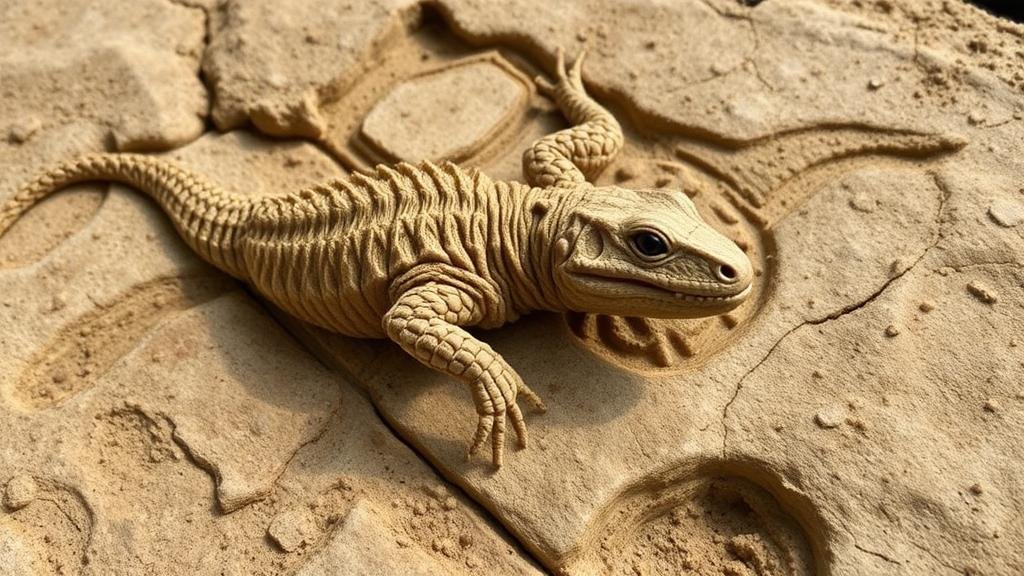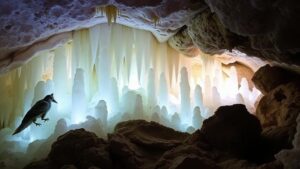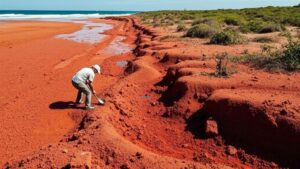Unearthing fossilized marine reptiles in the chalk cliffs of England’s Isle of Wight.
Unearthing Fossilized Marine Reptiles in the Chalk Cliffs of England’s Isle of Wight
The Isle of Wight, located off the southern coast of England, is renowned for its stunning chalk cliffs and rich geological history that dates back to the Cretaceous period. Among the treasures hidden within these cliffs, fossilized marine reptiles captivate both rockhounds and mineral collectors alike. This article will delve into the significance of these fossils, exploration methods, and practical tips for aspiring collectors.
The Geological Landscape of the Isle of Wight
The chalk cliffs of the Isle of Wight primarily consist of soft white chalk formed from the remains of tiny marine organisms, specifically coccolithophores. This sedimentary rock formation dates back approximately 70 million years, during the Late Cretaceous period, when the area was submerged underwater.
Within these cliffs, several significant fossil deposits can be found, including the remains of marine reptiles such as ichthyosaurs, plesiosaurs, and mosasaurs. These creatures were top predators of their time, and their fossilized remains provide crucial insights into prehistoric marine ecosystems.
Fossils of Marine Reptiles: An Overview
Marine reptiles flourished in the oceanic environments of the Cretaceous period, and their fossils are not just pieces of history; they are critical for understanding evolutionary biology and paleoenvironments. Here are key facts about some of the most commonly found marine reptile fossils on the Isle of Wight:
- Ichthyosaurs: Resembling modern dolphins, these fast swimmers were equipped with large eyes and streamlined bodies. Fossils often include skulls, vertebrae, and limb bones.
- Plesiosaurs: With their long necks and small heads, these creatures are often found with intact flippers and limb bones, providing insight into their unique locomotion.
- Mosasurs: These large marine lizards were powerful predators, and their fossils often include well-preserved skulls and jaws filled with sharp teeth.
The Fossilization Process
Fossilization is a complex process that generally occurs in sedimentary environments. On the Isle of Wight, the conditions were ideal for preserving the remains of marine reptiles. Fossils typically form through a series of steps:
- Decay: After death, the soft tissues of marine reptiles decay, leaving behind the hard skeletal material.
- Burial: Rapid burial by sediment helps protect these remains from scavengers and environmental degradation.
- Mineralization: Over time, minerals from the surrounding sediment infiltrate the bones, replacing organic material and forming a stable fossil.
This process can take millions of years, which is one reason why the fossils found on the Isle of Wight are invaluable to scientists and collectors.
Exploration Techniques for Collectors
For rockhounds and mineral collectors eager to explore the Isle of Wight’s chalk cliffs, specific strategies can enhance fossil hunting experiences:
- Research Locations: Key sites such as Compton Bay, Freshwater Bay, and the Undercliff are known for abundant fossil deposits. Detailed geological maps can guide your exploration.
- Timing is Important: Visit during low tide, as this exposes more rock surfaces and fossil finds.
- Collect Responsibly: Always follow local regulations regarding fossil collection, and avoid removal of large specimens to conserve the site for future generations.
Real-World Applications and Benefits
Collecting fossils goes beyond mere hobby; it serves various educational and scientific purposes:
- Educational Insight: Fossils help students and researchers understand evolutionary processes, extinction events, and ancient marine environments.
- Promoting Conservation: Knowledge gained from fossil studies can contribute to conservation efforts by highlighting the historical biodiversity of marine ecosystems.
Plus, fossil collections can enhance local tourism, as they draw enthusiasts and researchers to the area, thereby benefiting the local economy.
Conclusion: Treasure Awaits
The fossilized marine reptiles found in the chalk cliffs of the Isle of Wight are not only remarkable remnants of a bygone era; they also hold keys to understanding our planet’s history. For rockhounds and mineral collectors, this rich geological site offers both challenges and rewards. By approaching your quest with respect for the environment and knowledge of extraction techniques, you can successfully unearth these ancient treasures while contributing to the ongoing study of paleontology.
As you embark on your fossil-hunting adventure, remember to carry essential tools such as chisels, hammers, and brushes for uncovering fossils, and always take note of your finds in relation to geological layers for future study and reference.



